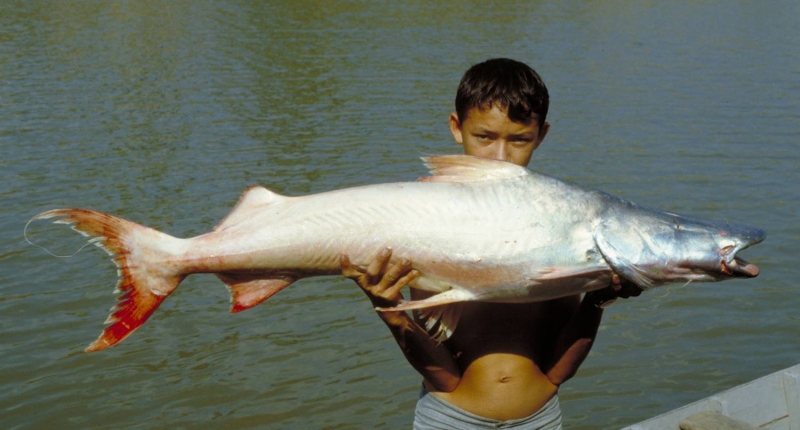Dorado Catfish Crowned with Longest Migration among Freshwater Fish

A recent study conducted by the SNAPP Amazon Waters Working Group and published in the journal Scientific Reports-Nature found that the western Amazon is the main spawning area for four closely-related species of "goliath" catfish and that one species, the dorado catfish, has the longest migration among freshwater fish.
These catfish species are widely distributed in the Amazon River basin and important for commercial fisheries. As such, the authors warn that future development in and near these spawning grounds could negatively impact the fishes' migration and the fishing industries that rely on them.
"This the first time that scientific research has linked the full range of these fish species that stretch from the Andes to the Amazon River estuary abutting the Atlantic Ocean. These findings can now inform effective management strategies for these fish, some of which are important for fishing industries in the region."
- Ronaldo Barthem, SNAPP Amazon Waters and Lead Author
The study used information on the presence of adult fish, juveniles, and larvae to determine the extent of their life-cycle migration. The research team found that the dorado catfish (B. rousseauxii) may take as long as 1-2 years to travel from the Amazon estuary to their breeding grounds near the Andes and that at least two of the other goliath catfish species bred near the Andes as well.
These findings serve as a foundation for future research studying the migratory pathways of goliath catfish and the seasonal timing of those migrations.
---
Goliath catfish spawning in the far western Amazon confirmed by the distribution of mature adults, drifting larvae and migrating juveniles
Barthem, R.B., Goulding, M., Leite, G.R., Canas, C., Forsberg, B., Venticinque, E., Perty, P., de B. Ribeiro, M.L., Chuctaya, J., Mercado, A.
Scientific Reports- Nature, February 2017, doi:10.1038/srep41784
